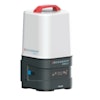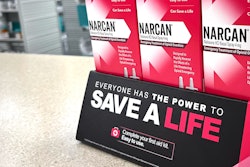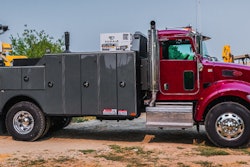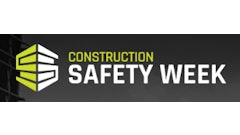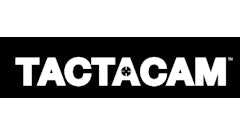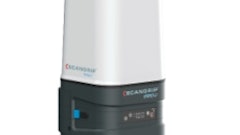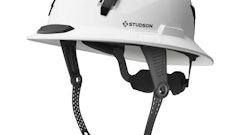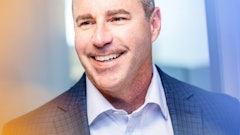
The construction industry faces significant challenges in workplace safety, particularly with the growing opioid crisis. Bob Kunz, Corporate Safety Director at Dimeo Construction, and SAFE Project (Stop the Addiction Fatality Epidemic) share a common goal: tackling opioid overdoses head-on and fostering safer work environments. By combining Bob's on-the-ground experience at Dimeo with SAFE Project's comprehensive resources and support, we highlight the critical need for naloxone programs in workplaces and offer insights on overcoming the associated challenges. With regional offices in Boston, Massachusetts; Providence, Rhode Island; and New Haven, Connecticut, Dimeo Construction specializes in preconstruction planning and construction services spanning work in the healthcare, corporate, life sciences/technology, college/university, k-12, and residential sectors.
Kunz began his career in construction in 1992, working for a company that operated quarries, asphalt, and concrete plants. Unexpectedly, he was asked to become the safety manager, despite having no formal safety training. Determined to succeed, he immersed himself in safety regulations, standards, and industry best practices. In 2007, he joined Dimeo Construction as their Corporate Safety Director. His team consists of six safety professionals and three interns, supporting a company of 200 employees, with up to 30 additional interns during the summer. Their projects involve an average of 1,200 to 1,600 workers.
Kunz's primary responsibility is to develop and implement a comprehensive risk management strategy to protect their workforce. He believes that prioritizing the well-being of employees is essential for achieving organizational goals. In recent years, Bob has focused on proactive safety planning, starting from the early stages of project development, and has become increasingly concerned about the mental health challenges facing the construction industry.
Kunz completed a Mental Health First Aid course in 2020, which significantly impacted his understanding of mental health issues and how to support employees and the broader construction community. By combining a strong foundation in safety standards with a genuine commitment to employee well-being, Dimeo Construction aims to create a safer and healthier work environment for everyone.  A mounted medical response backpack and first aid kit.Dimeo Construction
A mounted medical response backpack and first aid kit.Dimeo Construction
Early Adoption of Naloxone on Jobsites
Kunz was an early adopter of naloxone on jobsites. The motivation to take this step stemmed from the growing opioid crisis and the valuable expertise of two senior safety managers with extensive medical backgrounds—one an EMT and the other a paramedic with military and real-world training experience. This informed their conservative approach to developing a Naloxone at Work program.
Around 2017, Dimeo Construction began discussing the possibility of providing naloxone on job sites. However, concerns about liability, resource allocation, and medication storage in various environmental conditions hindered progress. Despite these challenges, they initiated a voluntary naloxone training program in April 2019, covering opioid overdose symptoms, recognition, and response procedures. This decision was supported by their existing robust first aid, CPR, and AED training program.
A pivotal moment occurred in December 2019 when one of their employees experienced an opioid overdose. A coworker with EMT training was unable to administer naloxone due to their being none on-site. The 911 responders had naloxone and efficiently reversed the accidental opioid overdose. This incident underscored the critical need to equip their workforce with both training and resources to handle such emergencies.
Why Naloxone is Worth Having in the Workplace
Stocking naloxone in the workplace is essential for addressing the opioid crisis and safeguarding employees. Naloxone can reverse opioid overdoses within minutes, making it a life-saving tool that should be readily available.
Given the high prevalence of substance use disorders among employed individuals and the risk of overdoses from prescribed pain medications, workplaces must be prepared to respond effectively. Implementing a naloxone program also helps reduce stigma and encourages employees to seek help, fostering a supportive environment.
For more detailed insights, refer to the previous article in this series, "Narcan in Construction: Forming the Alliance for Naloxone Safety in the Workplace".
 SAFE Project
SAFE Project
Implementation & Overcoming Challenges
When introducing the idea of stocking naloxone, there was no opposition from Dimeo Construction's internal staff. Employees were aware of the incident involving their coworker and supported implementing naloxone access. However, they encountered resistance from some subcontractors, including crew leaders, project managers, and superintendents.
To address these concerns, Dimeo Construction focused on explaining the importance of naloxone and its life-saving potential. They shared real-world examples of overdose reversals and emphasized that opioid use is not confined to specific demographics. By highlighting that anyone can be affected by an opioid overdose, they aimed to foster a greater understanding of the issue and encourage broader acceptance of naloxone on job sites.
A critical incident in December 2023 highlighted the importance of efficient emergency response. While the successful deployment of naloxone saved a subcontractor's life, they identified areas for improvement. Initially, their emergency kits were separated into first aid, AED, and naloxone components. This caused delays in accessing necessary supplies during a high-stress situation. To streamline this process, they consolidated all essential items, including naloxone, an AED, airways, and a bleeding control kit, into a single medical backpack. This backpack is easily transportable and ensures that teams have immediate access to all necessary equipment in emergency situations.
Advice for Safety Directors & Companies
Kunz recommends incorporating firsthand accounts from individuals in recovery from substance use disorder when implementing a naloxone program. Sharing personal stories can significantly impact employee attitudes and understanding. He also emphasizes the importance of involving individuals with hands-on experience administering naloxone to enhance training effectiveness and create a more engaging learning environment.
 SAFE Project
SAFE Project
How SAFE Project Can Help
SAFE Project is a national 501(c)(3) nonprofit committed to overcoming the addiction epidemic in the United States. Established in 2017 by Admiral James and Mary Winnefeld after the tragic loss of their 19-year-old son Jonathan due to an opioid overdose, SAFE Project aims to save lives impacted by substance use and mental health challenges through overdose prevention and response, education on stigma, and development of prevention and recovery programs.
Their SAFE Workplaces initiative works directly with individual businesses to address substance use and addiction. They can, for example, assist a workspace to overcome stigma and implement valuable resources and effective naloxone programs. SAFE Project also offers:
- Training Programs: SAFE Project provides naloxone training on their website, of various lengths, tailored to meet the specific needs of different organizations. These training sessions cover the basics of opioid overdose, how to recognize the symptoms, and the steps to administer naloxone.
- Educational Resources: SAFE Project offers educational materials to raise awareness about opioid use disorder and the importance of naloxone. These resources can help dispel myths and reduce the stigma associated with opioid use.
- Consultation Services: SAFE Project can work with organizations to develop customized programs, providing expert advice on policy development, training implementation, and best practices for maintaining naloxone supplies.
- Community Support: By partnering with SAFE Project, organizations can connect with a broader community of businesses committed to addressing the opioid crisis. This network provides opportunities for sharing experiences, learning from others, and collaborating on initiatives to improve workplace safety and employee well-being.
The Future of Workplace Safety
Bob Kunz envisions the future of workplace safety in the construction industry to include the integration of mental health and substance use prevention in safety roles. He believes that safety professionals, equipped with additional training, are uniquely positioned to address these issues. By developing strong relationships with their teams and fostering trust and open communication, safety professionals can identify potential issues early and connect employees with appropriate resources.
Ultimately, integrating mental health into safety practices will create a healthier and more supportive work environment, leading to improved employee well-being and overall organizational success.
Implementing a naloxone program in the workplace is a proactive and necessary step in addressing the opioid crisis. By providing training, reducing stigma, and ensuring that naloxone is readily available, organizations can protect their employees and create a safer, more supportive work environment. SAFE Project stands ready to help businesses navigate these challenges and make a positive impact on workplace safety and employee well-being.


